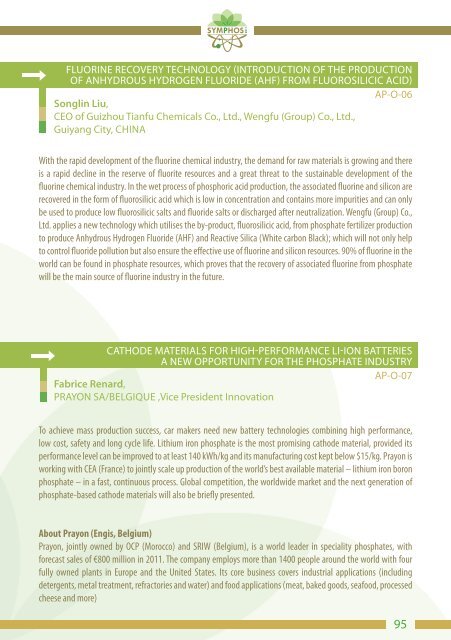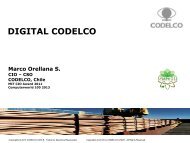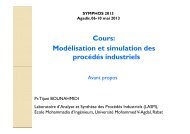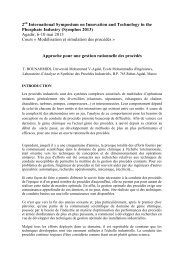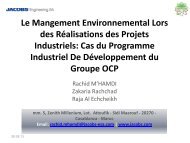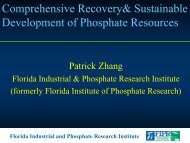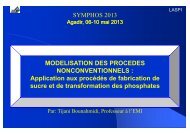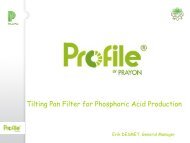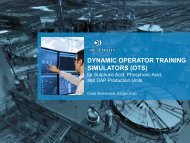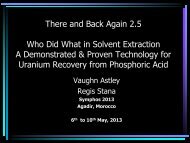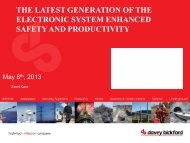Abstract SYMPHOS 2011
Abstract SYMPHOS 2011
Abstract SYMPHOS 2011
Create successful ePaper yourself
Turn your PDF publications into a flip-book with our unique Google optimized e-Paper software.
FLUORINE RECOVERY TECHNOLOGY (INTRODUCTION OF THE PRODUCTION<br />
OF ANHYDROUS HYDROGEN FLUORIDE (AHF) FROM FLUOROSILICIC ACID)<br />
Songlin Liu,<br />
CEO of Guizhou Tianfu Chemicals Co., Ltd., Wengfu (Group) Co., Ltd.,<br />
Guiyang City, CHINA<br />
AP-O-06<br />
With the rapid development of the fluorine chemical industry, the demand for raw materials is growing and there<br />
is a rapid decline in the reserve of fluorite resources and a great threat to the sustainable development of the<br />
fluorine chemical industry. In the wet process of phosphoric acid production, the associated fluorine and silicon are<br />
recovered in the form of fluorosilicic acid which is low in concentration and contains more impurities and can only<br />
be used to produce low fluorosilicic salts and fluoride salts or discharged after neutralization. Wengfu (Group) Co.,<br />
Ltd. applies a new technology which utilises the by-product, fluorosilicic acid, from phosphate fertilizer production<br />
to produce Anhydrous Hydrogen Fluoride (AHF) and Reactive Silica (White carbon Black); which will not only help<br />
to control fluoride pollution but also ensure the effective use of fluorine and silicon resources. 90% of fluorine in the<br />
world can be found in phosphate resources, which proves that the recovery of associated fluorine from phosphate<br />
will be the main source of fluorine industry in the future.<br />
CATHODE MATERIALS FOR HIGH-PERFORMANCE LI-ION BATTERIES<br />
A NEW OPPORTUNITY FOR THE PHOSPHATE INDUSTRY<br />
Fabrice Renard,<br />
PRAYON SA/BELGIQUE ,Vice President Innovation<br />
AP-O-07<br />
To achieve mass production success, car makers need new battery technologies combining high performance,<br />
low cost, safety and long cycle life. Lithium iron phosphate is the most promising cathode material, provided its<br />
performance level can be improved to at least 140 kWh/kg and its manufacturing cost kept below $15/kg. Prayon is<br />
working with CEA (France) to jointly scale up production of the world’s best available material – lithium iron boron<br />
phosphate – in a fast, continuous process. Global competition, the worldwide market and the next generation of<br />
phosphate-based cathode materials will also be briefly presented.<br />
About Prayon (Engis, Belgium)<br />
Prayon, jointly owned by OCP (Morocco) and SRIW (Belgium), is a world leader in speciality phosphates, with<br />
forecast sales of €800 million in <strong>2011</strong>. The company employs more than 1400 people around the world with four<br />
fully owned plants in Europe and the United States. Its core business covers industrial applications (including<br />
detergents, metal treatment, refractories and water) and food applications (meat, baked goods, seafood, processed<br />
cheese and more)<br />
95


